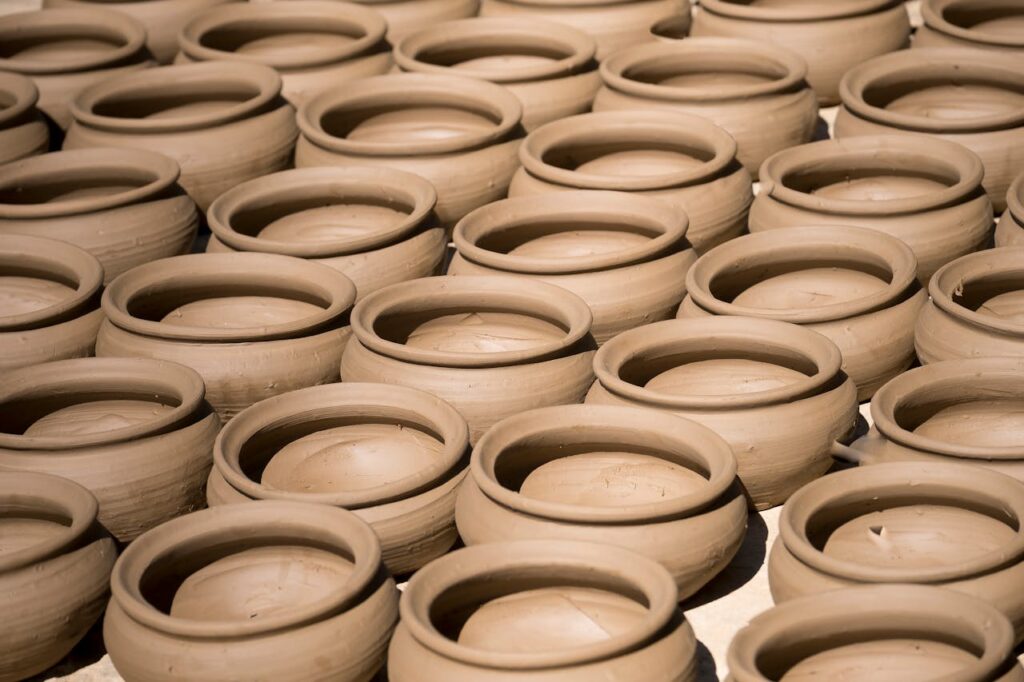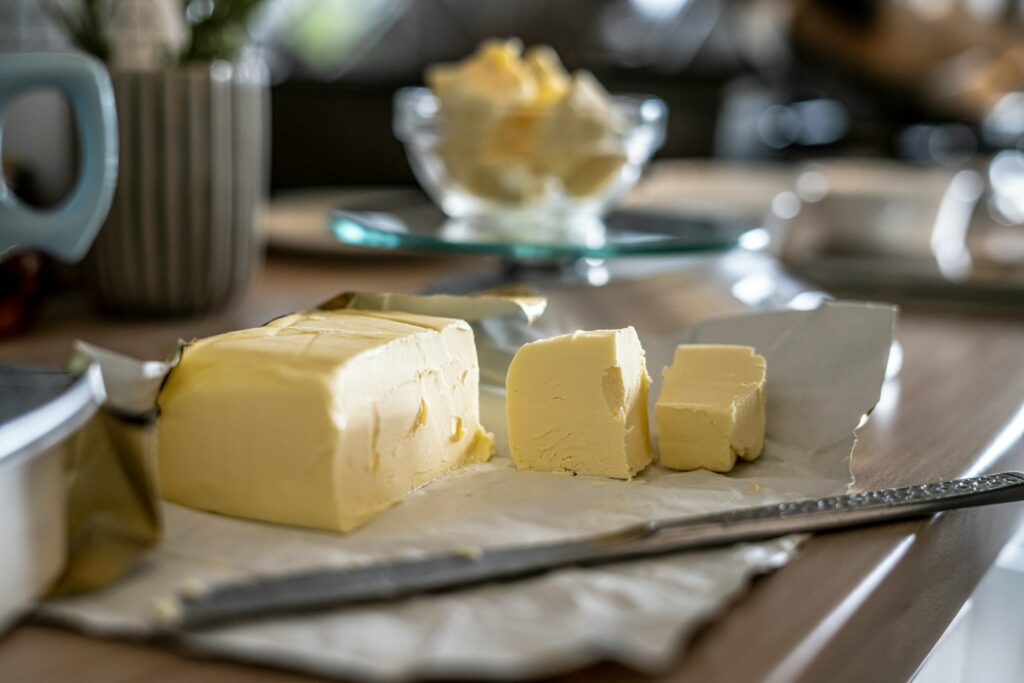DSC (differential scanning calorimetry) is an essential thermal analysis method for assessing a material's response to temperature variation. In an industrial context where mastering materials has become strategic, understanding their thermal behavior is essential. Whether to control the quality of a polymer, validate the stability of a protein, or optimize the shaping of a composite material, engineers, formulators, and quality managers rely on advanced analysis tools. Discover the analyses available in DSC in our catalog to better meet your needs.
This article guides you step by step through the principles, applications and challenges associated with this benchmark technique.
Table of Contents
Introduction to DSC: Why analyze the thermal behavior of materials?
Thermal control, a key issue for industry
In all technical sectors – plastics, pharmaceuticals, cosmetics, food processing or advanced materials – products are subject to temperature variations, whether during their manufacture, packaging, transport or final use. These variations can lead to major physical or chemical transformations: melting , crosslinking, degradation, crystallization, or even loss of stability . Without a detailed understanding of these behaviors, manufacturers expose themselves to risks of non-compliance, reduced performance or product defects.
Thermal analysis therefore makes it possible to anticipate these reactions and optimize formulations, processes and conditions of use. In this field, DSC is essential.
A technique at the heart of quality control and R&D
Differential scanning calorimetry, better known by its acronym DSC (Differential Scanning Calorimetry), is used to assess how a material reacts to a controlled thermal program. It relies on the precise measurement of heat flows involved in phase transitions or chemical reactions of the material being analyzed.
Thanks to this approach, the DSC allows:
- determine the characteristic temperatures of a material (melting, crystallization, glass transition);
- measure the quantities of energy absorbed or released (enthalpy);
- assess the thermal stability of a product;
- check the effectiveness of a heat treatment (crosslinking, hardening, cooking);
- characterize the nature and purity of a material.
It is therefore a valuable method for quality control departments, materials design offices, or R&D teams developing new products.
Accessible, fast and versatile technology
DSC has many advantages which explain its popularity in the laboratory:
- it is applicable to a wide variety of materials: polymers, composites, metals, ceramics, pharmaceutical products, cosmetics, foods, proteins, etc.;
- it requires a small amount of sample (a few milligrams);
- it offers precise and reproducible results, even on weak or complex thermal transitions;
- It allows rapid measurements, with typical cycles of a few tens of minutes.
Finally, modern equipment offers advanced options, such as temperature modulation (MDSC), which allows the separation of overlapping thermal events, or direct measurements of heat capacity.
A method supported by international standards
Like any industrial laboratory analysis, DSC is subject to a strict regulatory framework. Laboratories that perform DSC analyses must be accredited according to ISO 17025 to ensure the reliability and validity of the results. In France, this accreditation is issued by COFRAC.
DSC analysis may also be required in certain specifications or regulatory frameworks, particularly in the food contact packaging or polymer materials intended for export sectors. It therefore constitutes both a characterization tool, a diagnostic tool and a compliance requirement.

What is Differential Scanning Calorimetry (DSC)?
Differential scanning calorimetry, or DSC, is a thermal analysis technique that relies on measuring heat exchange between a sample to be analyzed and an inert reference. When a material is subjected to a temperature variation, it can absorb or release energy depending on the nature of the physical or chemical transformations it undergoes. It is this difference in heat flow that DSC can accurately measure.
Scientific definition of DSC
DSC is an instrumental method used to measure the amount of energy (in joules) that a sample absorbs or releases as it is heated, cooled, or maintained at a constant temperature. It can detect thermal events such as:
- physical phase transitions (melting, crystallization, glass transition);
- chemical reactions (crosslinking, polymerization, degradation, etc.);
- structural changes (relaxation, phase separation, etc.).
Measurements are performed by comparing the thermal behavior of the sample with that of a thermally neutral reference, placed in an identical crucible. The temperature is increased linearly (typically between 0.1 and 20 °C/min), and the difference in heat flux is recorded as a function of temperature or time.
How DSC works
The fundamental principle of DSC is based on the fact that during a change of state, the sample exchanges energy with its environment to compensate for the thermal requirements associated with the transition. This energy results in a variation in the heat flux measured by the device.
Two main types of transitions can be observed:
- endothermic processes , such as melting or the glass transition, where the sample absorbs heat to maintain its constant temperature during the change of state;
- exothermic processes , such as crystallization or crosslinking, where the sample releases heat.
These phenomena are visible on the DSC thermogram in the form of peaks (upwards for exothermic events, downwards for endothermic events in the majority of systems). The peak is characterized by:
- its start, peak and end temperature;
- its surface, which corresponds to the enthalpy associated with the transition.
Measurement methods: heat flux and compensated power
There are two main types of DSC devices, which differ in their thermal detection mode:
- Heat-flux DSC
This is the most common method. The sample and the reference are placed in the same furnace, on a common support that ensures thermal conduction. The system measures the temperature difference between the two crucibles to deduce the heat flux. - Power-compensated DSC
Here, the sample and reference are housed in two separate but thermally coupled furnaces. Each furnace is heated independently, and the device continuously adjusts the power supplied to each crucible to maintain both at the same temperature. The difference in applied power is directly related to the heat flux of the sample.
Modern DSCs also allow modulated analyses (MDSC) where a sinusoidal temperature modulation is superimposed on the thermal program. This technique allows the separation of reversible (phase transitions) and irreversible (chemical reactions) phenomena, which improves resolution in the case of overlapping thermal events.
Interpreting a DSC thermogram
The thermogram is the central graph of DSC analysis. It represents the difference in heat flux (in mW or mW/mg) as a function of temperature or time.
Here are some key elements to identify on a thermogram:
- Broad and progressive endothermic peak : glass transition (Tg), without notable enthalpy change.
- Sharp and symmetrical endothermic peak : fusion (Tm), associated with significant heat absorption.
- Exothermic peak : crystallization, polymerization, or oxidation.
Analysis of the peak area allows the calculation of the transition enthalpy (ΔH) , expressed in J/g. This data is essential for evaluating:
- the degree of crystallinity (in a semi-crystalline polymer);
- the degree of crosslinking (in a thermosetting material);
- or the purity of a compound, particularly in the pharmaceutical field.
The ability to detect weak thermal transitions, such as phase separation in a copolymer or partial denaturation of a protein, also makes DSC a very fine diagnostic tool.
Calibration and experimental conditions
To ensure reliable and reproducible results, DSC requires regular calibration, particularly on:
- temperature , with well-known reference materials such as indium (Tf = 156.6 °C, ΔH = 28.45 J/g) or zinc ;
- heat flow , using certified standards.
Analyses must be carried out under inert gas (argon or nitrogen) to avoid any oxidation or undesirable reaction, and with carefully prepared samples (mass, shape, absence of humidity). The choice of crucible (aluminum, airtight, open) depends on the nature of the material studied and the type of analysis sought.
In the following sections, we will explore the parameters measured by DSC as well as its many industrial applications.
Are you looking for an analysis?

What parameters can be measured with DSC analysis?
DSC analysis provides a wealth of thermodynamic and structural information about a material. This data is valuable for understanding its behavior during transformation, anticipating its stability, or validating its functional properties. The results are based on direct measurements of heat exchanges linked to physical or chemical phenomena that occur at specific temperatures. Here are the main parameters measured during a DSC analysis.
Glass transition temperature (Tg)
The glass transition (Tg) is a fundamental characteristic of amorphous materials, including polymers, glasses, resins, and biopolymers. It corresponds to the transition from a rigid state to a more flexible or rubbery state without any change in physical state.
The glass transition temperature is measured as a plateau or inflection on the thermogram , usually on a very broad peak. This transition is not accompanied by a massive heat exchange, but it is detectable by a variation in the heat capacity (Cp).
Measuring the Tg allows us to:
- determine the conditions of use of a material (mechanical resistance at room or high temperature);
- monitor the evolution of a product over time or after treatment;
- control the stability of a polymer or composite after aging or sterilization.
Melting (Tm) and crystallization (Tc) temperature
The melting temperature (Tm) corresponds to the transformation of a crystalline solid into a liquid. This transition is endothermic and is manifested on the thermogram by a sharp descending peak . The area of this peak allows the enthalpy of fusion (ΔHf) .
Conversely, the crystallization temperature (Tc) corresponds to the formation of an organized solid phase from a liquid or an amorphous material. This transition is exothermic , visible by an ascending peak on the thermogram.
This data is essential for:
- optimize thermal transformation parameters (molding, injection, annealing temperature, etc.);
- quantify the crystallinity rate (by comparing the measured enthalpy with that of a 100% crystalline material);
- analyze the cooling or annealing behavior of a polymer, metal or composite.
Reaction enthalpy and crosslinking rate
Some materials, particularly thermosetting resins or organic matrix composites, undergo crosslinking (or hardening) when the temperature rises. This chemical reaction is often exothermic, and generates a peak on the thermogram whose surface corresponds to the reaction enthalpy .
This measure allows:
- quantify the crosslinking rate of a resin (by comparing the energy released to the theoretical value);
- identify an incomplete cure or a cooking defect ;
- characterize the thermal cycle undergone by a composite part.
In formulation, the enthalpy of reaction is also useful for adjusting hardener proportions, curing times or processing temperatures.
Heat capacity (Cp)
Heat capacity (or heat capacity), expressed in J/g·K, refers to the amount of heat required to raise the temperature of one gram of material by one degree. In some advanced DSC models, it can be measured directly from the absolute heat flux divided by the heating rate .
Monitoring Cp as a function of temperature allows for the observation of progressive changes in the structure or composition of the material. This is a particularly useful parameter for:
- detect gradual phase transitions ;
- observe phenomena of relaxation, aging or phase separation ;
- analyze the thermal behavior of proteins or complex substances.
Crystallinity rate
The degree of crystallinity is an indicator of the structural order present in a semi-crystalline material. It is calculated by comparing the measured enthalpy of fusion (ΔHf measured) with the theoretical enthalpy of fusion of a 100% crystalline material (ΔHf theoretical), according to the formula:
Crystallinity rate (%) = (ΔHf measured / ΔHf theoretical) × 100
For example, for high-density polyethylene (HDPE), the theoretical enthalpy of fusion is approximately 293 J/g.
Knowing this rate allows you to:
- adjust the structure and mechanical performance of a material;
- assess the quality of a heat treatment (annealing, quenching, cooling, etc.);
- detect degradation or partial crystallization .
Purity and homogeneity of a material
Finally, DSC is also used to estimate the purity of a compound (particularly in pharmacy or fine chemistry), by analyzing the shape and position of the melting peak:
- a single, sharp peak corresponds to high purity;
- a broad or shifted peak may indicate the presence of impurities or polymorphs.
This analysis is valuable for:
- validate the quality of an active pharmaceutical ingredient (API);
- identify a contaminated or poorly formulated batch ;
- detect the presence of secondary phases or mixtures .

Industrial applications of DSC: a versatile tool
DSC isn't just a laboratory tool reserved for research. It's an analytical technique widely used in industry for quality control, process optimization, and new product development. Its versatility makes it a strategic ally in many sectors. From technical polymers to thermostable vaccines, each material can reveal its thermal and structural properties through well-conducted DSC analysis.
Polymers and plastics sector
DSC is a benchmark method in the world of polymers. It allows for the precise characterization of thermal properties that determine their suitability for processing or use.
Industrial uses of DSC in this sector include:
- determination of the glass transition temperature (Tg) to choose the operating or storage temperatures;
- the measurement of melting temperatures (Tm) to define molding or extrusion parameters;
- the evaluation of the crystallinity rate , which influences mechanical resistance, transparency or rigidity;
- control of the crosslinking rate of thermosetting polymers used in glues, resins or composites.
Examples of applications:
- material validation for plastic injection (PP, PET, PA, POM, etc.);
- HDPE batch tracking for food packaging;
- characterization of elastomers for the automotive industry.
Composite materials: thermosets and thermoplastics
In composite materials, particularly those with an organic matrix, DSC analysis plays an essential role at several stages of the product life cycle.
Main applications include:
- monitoring the crosslinking of thermosetting resins (epoxy, polyester, vinylester, etc.) to validate the cooking cycle or identify under-polymerization;
- the determination of the post-curing Tg , to ensure that the material will withstand the final mechanical and thermal stresses;
- the evaluation of the crystallinity of thermoplastic matrices (PEEK, PPS, PEI) used in aeronautics or medicine.
DSC is also valuable in failure expertise to detect a cooking error, poor formulation or alteration of the material after aging.
Pharmaceutical and biomolecular industry
In the pharmaceutical field, DSC is used for both active substances , finished formulations and therapeutic proteins .
Common uses include:
- characterization of the purity of the active ingredients (clear melting peak, absence of impurities);
- the measurement of the thermal stability of proteins (denaturation temperature, associated ΔH), essential for monoclonal antibodies, vaccines or enzymes;
- the study of ligand-protein interactions , to assess the efficacy or compatibility of an excipient;
- the verification of polymorphs or different crystalline states of the same compound, having an impact on solubility or bioavailability.
DSC is also useful in the quality control of complex formulations such as suspensions, creams or combination devices.
Cosmetics and formulation
In cosmetics, the texture, stability, and performance of a product often rely on sensitive thermal balances. DSC allows us to objectify the functional properties of formulations.
Among the main applications:
- study of thermal transitions in emulsions , to detect instabilities or risks of phase separation;
- analysis of the thermal stability of an active ingredient (vitamins, essential oils, fruit acids, etc.);
- characterization of waxes, butters and anhydrous bases , by their melting profiles;
- detection of the influence of an additive on the structure of a gel or serum.
DSC is also used to validate the effects of heat treatment (drying, sterilization) on the final formulation.
Agri-food products
The food industry also uses DSC to characterize physical phenomena such as melting, crystallization or gelation.
Some typical applications:
- determination of the melting point of fats (butters, margarines, vegetable oils);
- analysis of the crystallization of sugars or starches , with influence on texture and conservation;
- study of glass transitions in powders (infant milks, flavorings, dry ingredients) to predict stability;
- assessment of protein denaturation in processed or enriched products.
This data makes it possible to optimize processes (freeze-drying, extrusion, cooking), control the quality of ingredients or improve the shelf life of products.

Laboratory analyses by DSC: protocols, standards and quality of results
While DSC is a powerful and versatile method, its reliability relies primarily on rigorous adherence to analytical protocols, the selection of appropriate experimental parameters, and the application of quality standards. This section describes the key steps of laboratory DSC analysis, the regulatory requirements to be met, and best practices that ensure usable results, particularly in an industrial or regulatory context.
Sample preparation: a crucial step
A DSC analysis always begins with sample selection and preparation. These steps directly affect the quality of the thermal signal.
The main points of vigilance are:
- sample mass : generally between 2 and 20 mg, depending on the nature of the material and the desired resolution;
- physical state : the sample must be homogeneous, without residual moisture or impurities (especially for polymers and proteins);
- shape and thermal contact : the powder or fragment must be well distributed in the crucible for optimal heat transfer;
- crucible type : aluminum for most analyses, airtight for volatile or oxidation-sensitive materials, gold or platinum for extreme cases.
Particular care must be taken with the initial weighing , carried out on a microbalance, because the enthalpy and heat capacity calculations depend on the exact mass of the sample.
Experimental conditions: thermal programming and atmosphere
Once the sample is placed in the DSC, a temperature program is applied. This program is defined according to the properties of the material to be analyzed and the objective of the study.
The parameters to configure are:
- temperature range : typically between -100°C and +400°C, up to +700°C for high temperature DSCs;
- ramp rate : often between 2 and 20 °C/min; slower ramps are used for subtle transitions;
- isothermal segments : sometimes inserted before or after a transition stage to observe thermal equilibria;
- sweep gas : generally nitrogen or argon (50 to 100 mL/min) to avoid oxidation or parasitic reactions.
Modulated temperature (MDSC) tests can also be conducted to distinguish overlapping transitions or to improve the resolution of glass transitions.
Device calibration and validation
To ensure accurate results, the calorimeter must be calibrated regularly , both in temperature and enthalpy.
Calibration standards include:
- indium (Tf = 156.6 °C; ΔH = 28.45 J/g);
- zinc , tin or lead , to expand the calibration range.
ISO 17025 accredited laboratories implement metrological verification , traceable to national standards. In addition, internal control materials (ICMs) may be used to validate each series of analyses.
Standards and Compliance: ISO 17025 and Regulated Sectors
DSC analysis is governed by international standards guaranteeing the competence of laboratories and the validity of results:
- ISO 11357 (parts 1 to 7): reference standard for thermal analyses on polymers by DSC;
- ISO 17025 : quality standard imposed on laboratories to guarantee the reliability, traceability and impartiality of analyses
In certain sectors, the DSC is also subject to specific benchmarks:
- food packaging : compliance with EC regulation no. 1935/2004 on materials in contact with food;
- cosmetics and nutraceuticals : safety and stability of formulations according to European guidelines.
Analysis reports must include all critical data: experimental conditions, thermograms, interpretation, uncertainties, signature of a responsible analyst, and mention of accreditation where applicable.
Interpretation and use of results
The final step in a DSC analysis is the interpretation of the thermogram. This phase requires expertise and perspective to:
- identify significant thermal events : phase transitions, chemical reactions, possible artifacts;
- quantify thermodynamic parameters : temperatures, enthalpies, thermal capacities;
- compare profiles to those of standard materials or to previous data;
- issue usable conclusions : conformity, performance, alteration, aging, etc.
A good laboratory does not just provide raw results. It must support the manufacturer in analyzing deviations , understanding root causes and making decisions.

Why use YesWeLab for a DSC analysis?
Differential scanning calorimetry (DSC) is a high-precision thermal analysis technique essential for characterizing the thermal transitions of a material. To fully exploit the results and ensure data reliability, it is crucial to work with a partner who understands both the technical requirements and industrial challenges. YesWeLab gives you access to DSC analyses performed by specialized laboratories, simple, fast, and centralized digital platform
Advanced technical expertise for your complex materials
The results obtained by DSC are very rich, but require expert interpretation. YesWeLab laboratories have:
- experienced engineers in thermoanalysis, materials chemistry and formulation,
- in-depth knowledge of numerous matrices: polymers, active ingredients, resins, cosmetics, proteins, fats, etc.,
- additional equipment to correlate thermal data with mechanical or chemical results (ATG, FTIR, HPLC, SEM, etc.).
DSC analysis thus becomes a decision-making tool, allowing for example the identification of complex transitions, the comparison of thermal profiles or the confirmation of conformity to a reference profile.
High-performance equipment accessible via a European network
Thanks to its network of more than 200 partner laboratories in France and Europe, YesWeLab provides you with:
- extended temperature DSCs (up to 700°C) with standard and modulated modes (MDSC),
- advanced cooling options, controlled pressure or technical coupling,
- customized protocols according to the nature of the matrix and the analysis objectives.
Whatever your needs—quality control, regulatory filing, product development, or applied research—YesWeLab offers you the most suitable analytical solution via a digital one-stop shop.
Save time, improve reliability and compliance
Going through YesWeLab also means ensuring:
- a quick turnaround time , often within a few working days, even in an emergency,
- regulatory compliance : our partner laboratories are ISO 17025 accredited and their reports are accepted by the authorities (ANSM, EFSA, REACH, etc.),
- complete traceability : protocols, results and interpretations are secure and audited,
- guaranteed confidentiality , with protection of your sensitive data.
This way you avoid analysis errors, delays in your regulatory files and non-conformities in production.
Personalized support from start to finish
YesWeLab doesn't just deliver results. Our approach is focused on customer support , with:
- assistance in defining the analytical need and choosing DSC parameters,
- validation of protocols adapted to your matrices,
- technical advice to optimize your formulations or processes,
- responsive monitoring at each stage of the project.
Thanks to our digital platform, you can easily manage your DSC analysis requests, from ordering to analyzing the results.
Use case: when to use DSC analysis?
Here are some concrete cases in which YesWeLab supports you effectively:
- Quality control of a batch of polymer before transformation,
- Thermal validation of a composite material for aeronautics,
- Optimization of the stability of a cosmetic or nutritional formulation,
- Analysis of a thermal gap detected during accelerated aging.




